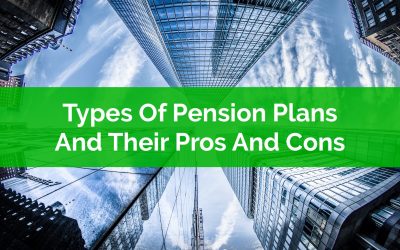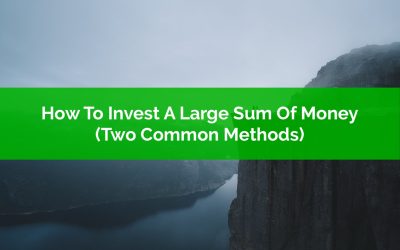Thank you for joining the waitlist!
You’re on the list for early access!
We will contact you via email when we’re ready for you to start your self-directed financial plan. In the mean time here is a quick preview…
Check out our latest blog posts…
Types Of Pension Plans And Their Pros And Cons
There are three main pension arrangements in Canada and most people, if they have a pension plan, have one of these three main types. There are defined benefit pensions, defined contribution pensions, and group-RRSPs. Each of these have their pros and cons. (There are also some unique pension plans but these are typically intended for high income executives or business owners.)
Having an employer pension plan can be a huge benefit for retirement. An employer pension makes saving for retirement easier by taking deductions directly off your income, plus it also typically comes with employer matching. This employer matching can be worth anywhere from a few percent of your salary all the way up to 18% of your salary (depending on the plan and the retirement benefits provided).
The automatic nature of pension contributions make them a great way to save for retirement. This “forced savings” is a huge benefit in itself, regardless of the employer matching.
Depending on the type of pension you have, this money gets paid out in different ways at retirement. Some plans cannot start before a certain age while others can be accessed earlier. Depending on your retirement goals this flexibility (or lack of flexibility) is an important consideration in your financial plan.
Some pensions, specifically defined benefit pensions, may also come with health benefits, travel benefits, or life insurance benefits after retirement. This can be another important benefit of a defined benefit pension plan, one that shouldn’t be ignored (especially when deciding between a defined benefit pension and a commuted value option).
It pretty much always makes sense to participate in an employer pension plan, but the different plans do have their pros and cons. Let’s explore the three main types of plans in Canada and their pros and cons.
How To Invest A Large Sum Of Money
At some point in their life many investors are faced with deciding how to invest a large sum of money. This large sum of money could be from something like an unexpected bonus, or the proceeds from downsizing a home, or from something unfortunate like the passing of a family member.
Investing a lump-sum can be a daunting experience for even the most experienced investor. There can be a lot of fear and worry when it comes to investing a large lump-sum. Fear of what could happen if the market drops right after you invest.
Often this fear and worry can cause delays. Sometimes these delays can extend for months or even years, with large piles of cash sitting in a savings account waiting for the “right time” to invest.
These fears are understandable. There is a fairly good chance when investing a lump-sum that you could see the balance drop in the future. In the example below you’ll see that during approximately 67.3% of historical periods investing all at once is the better financial decision, but that means 32.7% of the time it is not.
There are two main methods when it comes to investing a lump-sum. Which method you choose will depend on how you’re feeling. Are you worried about what might happen if you invest a lump-sum all at once? Or are you ok with the risk because there is a good chance of higher financial gain?
When deciding how to invest a large lump-sum there are two common methods. One method is to invest the entire lump-sum all at once. This is mathematically the best option. The other is to dollar cost average smaller amounts into the market over time. This is psychologically often the best option.
Psychology is one consideration when choosing how to invest a large sum of money. Probability and expected return is another consideration. These are two important considerations when choosing how to invest a lump-sum.
Best Way To Save Money For A House? Save Or Invest?
What is the best way to save money for a house? This is an interesting question and the old advice might require a new perspective given the reality of the current housing market. Home prices have changed dramatically over the last few years and this is impacting how people are making decisions around home ownership.
Over the last few years we’ve seen the average home price increase faster than our ability to save for a down payment. This can make it difficult to save money for a house and this can push home ownership to later stages in life.
This trend in home ownership has been happening for decades, with home ownership shifting later and later. This may be due to a number of factors but there is a definite trend towards purchasing a home later in life.
In 1981 approximately 55.5% of those who were over age 30 lived in their own home.
In 2016 approximately 50.2% of those who were over age 30 lived in their own home.
With the continued increase in home prices since 2016 it’s reasonable to assume that home ownership will continue to shift into the 30+ age group.
So if purchasing a home is happening later in life, does that change the way we save money for a house? Does that change the way we build up our down payment?
Conventional financial advice would suggest that any savings required in the next 1-5 years should be kept in something safe, like a GIC or a high-interest savings account. Historically this meant that savings for a down payment would go into one of these safe investment vehicles.
But what if someone is starting their career in their early 20’s and isn’t planning to purchase a home until their early 30’s, late-30’s or maybe even their 40’s? Should they still be saving for a down payment in a safe investment like a GIC?
Maybe, or maybe not. In this post we’ll explore a different way to save money for a house. A way that is perhaps more reflective of purchasing a home later in life.



